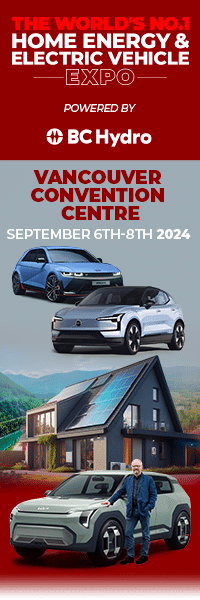
See full review from Green Car Guide
The all-electric Renault ZOE is good to drive and the Z.E.40 model now comes with an official 250 mile range, making it a more practical and therefore a more attractive proposition to many motorists.
Model/Engine size
Renault ZOE Dynamique Nav Z.E.40
Summary
- Good to drive
- ZOE Z.E.40 has a 250 mile electric range
- You need to consider if you should buy a ZOE Type R or a ZOE Type Q
- User-friendly access to public recharging infrastructure still has a lot of room for improvement
Background
We’ve reviewed the Renault ZOE before but the new Z.E.40 model, with its 250 mile official NEDC range, has the potential to prove practical for a lot more people, as it means you can venture beyond city limits without worrying (too much) about the public recharging infrastructure.
Design & Engineering
The Renault ZOE is an all-electric, five-seat, five-door hatchback. We think it looks good on the outside, and the interior is also modern and stylish.
The 400v, 22 kWh lithium-ion battery sits under the car’s floor, with the 68kW (92hp) electric motor lives under the bonnet. It’s front-wheel drive and it effectively has an automatic transmission (albeit this is a single-speed gearbox).
Renault Zoe ZE 40 Driving Experience
The headline is that the Renault ZOE is good to drive. Like most electric cars, there’s instant torque, resulting in smooth and linear acceleration. Combine the near-silence of the powertrain with its rapid acceleration, and you can see why many people become addicted to electric cars. It’s very difficult to go back to a noisy, clattery diesel, with a lumpy torque curve, after the refinement and ease of driving an EV.
Thanks to the weight of the major powertrain item, the 290kg battery, sitting about as far down in the car as it’s possible to go, the ZOE has a low centre of gravity and therefore good handling.
The ZOE feels small, agile and fun to drive (and to park, helped by its reversing camera), but it also has a decent-sized interior. It’s much more practical than the BMW i3, which is only available with two rear seats, and two half-width rear suicide doors that have to be opened from the outside to enable rear-seat passengers to exit.
The driver’s seat is rather high, in part due to the battery being under the floor, but what the ZOE does have, that the LEAF hasn’t got, is a steering column that adjusts for reach as well as height, which in our opinion puts the ZOE well ahead of the LEAF. The driving position isn’t perfect, but it’s much better than it would be without a steering column with reach adjustment.
Interestingly, some colleagues were trying out a ZOE as part of the Electric Nation project at the same time as our review, and just as we rated the ZOE ahead of the LEAF due to the steering adjustment, they rated the LEAF above the ZOE due to the rear door handles on the ZOE. These handles are in the corner of the rear windows of the ZOE, and it was felt by the Electric Nation team that the handles were difficult to get hold of, and felt cheap – thereby leaving them with the impression that the whole car felt cheap.
The ZOE has a modern touchscreen and, hooray, it has separate heating controls, rather than being hidden in a sub-menu on the touchscreen.
One feature that has mixed reviews among people who have driven the ZOE is the way the car locks itself automatically when you walk away from it. This is a Tesla-esque feature, but on balance, people don’t seem to like the car choosing by itself to lock babies and children in the car.
Another thing to watch out for is the very sharp top corner of the driver’s door. Because the door goes into the roof, rather than stopping below the roof as in most cars, you’re left with the top of the door that curves over into a very sharp point and is best kept clear of when opening and closing the door.
And if you want to drop down half of the rear seat back to accommodate a child’s buggy or similar, you can’t do this, as the ZOE is only available with a one-piece rear seat back.
Renault Zoe ZE 40 Economy and Emissions
So we’ve established that the ZOE looks good and it drives well, but its main party trick is that it can (theoretically) drive 250 miles with zero tailpipe emissions. This means zero tailpipe CO2 emissions, plus zero NOx and particulates, which are the big issues today, meaning that the ZOE is ideal for urban areas that have air quality problems (ie. all urban areas).
However, just like the NEDC test doesn’t relate accurately to real-world economy for petrol and diesel cars (and especially plug-in hybrids), the NEDC range for electric vehicles isn’t realistic in the real-world either. So although the NEDC cycle says that the ZOE Z.E.40 achieves 250 miles of range before the battery needs recharging, Renault says that equates to a real-world range of 186 miles. However even this only applies to urban or suburban driving in summer. In winter Renault says this drops to 124 miles.
So what real-world range did we experience? Well, the ZOE arrived with a fully charged battery and a display showing a range of 134 miles. Yes, this is significantly down on the 250 mile figure, and also the 186 mile figure – but 10 miles better than the 124 mile winter figure. The ZOE was here at the beginning of April, which we calculate is half-way between winter and summer. So 134 miles is somewhat disappointing, but you never know how cars have been driven previously, so our plan was to see if we could improve on that range, and so improve on our report of the car.
To do that we needed to be able to recharge the ZOE. We have our own 7kW home charger, but it was one of the first in the UK, so it’s a Type 1 connector, ie. for cars such as the Nissan LEAF and the Mitsubishi Outlander PHEV. The ZOE has a Type 2 connector, so we couldn’t use our fast home charger.
Every single plug-in press that car that we’ve ever had over the last seven or so years has come with a charging cable with a 3-pin plug, meaning that we can plug the car in to our dedicated exterior socket, which has been specially wired on its own circuit for the recharging of EVs that aren’t compatible with a Type 1 connector. It’s not that fast, but can easily recharge the battery fully overnight if you’ve driven less than 50-60 miles during the day. However an EVSE cable (with a 3-pin plug) wasn’t provided with the ZOE (it isn’t included if you buy a ZOE either, it’s an extra that costs around £495).
OK, no problem, we could use the local public charge point. So we turned up with our three charge cards provided by Renault – for Ecotricity, PodPoint and Chargemaster/Polar – but none of these charge cards worked as it’s a Charge Your Car point. So we download the CYC app but couldn’t get the app to work with the charge point. So we were unable to recharge the car.
Thankfully, one of our contributors has a ZOE, and so we turned up at his house and stole some of his electricity. However doing this regularly throughout the week with the ZOE was a bit of pain, so the ZOE wasn’t able to be fully charged on a daily basis and so it didn’t get the full use that it should have done; there were two journeys that the ZOE couldn’t be used for, in part because there was no time to charge en route.
So we were never able to fully test the NEDC claim of 250 miles of range. Having an EVSE cable with a 3-pin plug would have enabled us to do this.
We could also have done this if a strategy for the UK’s public charging infrastructure had been intelligently thought through. We regularly receive comments from people with EVs that they need a pocketful of cards for different charge point networks if they have to travel around the country. Please can someone show some leadership and let’s just have one card or one smartphone app to access all charge points (Renault says that two new smartphone applications to make it easier to charge at public charging points – Z.E. Trip and Z.E. Pass – will be available later in 2017). And at the same time as we’re making access to charge points easier, let’s standardise EV cable connections. When we’ve driven around the UK in Teslas we’ve never had any problems with charging; you turn up at a supercharger, plug in, it works, and the car charges – quickly.
In fairness, we have driven around the UK in ZOEs before; our press cars have managed to charge at motorway service stations, but the ZOE owned by one of our contributors has always had problems when attempting such charging, resulting in failure to charge and scary warnings on the dashboard. Switching the car off for half an hour and coming back to it later has been the only solution to this issue.
When things do work, the idea is that the ZOE’s Chameleon charger allows it to adapt and always charge at the maximum possible rate from any given charging source – it’s adaptable for single or three phase power from 3-43 kW.
Charging time based on a 9 kW single-phase 32 A supply is 3-4 hours; a 22 kW three phase 32 A charge point or a 43 kW three phase 63 A charge point both provide 80% charge in an hour.
Running costs for electric cars are much lower than petrol or diesel cars – around one-fifth of the price. And they’re still cheaper in terms of BIK company car tax, and road tax (VED) is free – as is access to the London Congestion Charge zone.
Price and Model Range
The ZOE Z.E.40 costs £15,545 (after the UK government plug-in car grant of £4,500). Our test car cost £16,350 with options of 17-inch alloys (£310), and metallic paint (£495). You can also buy a cheaper ZOE with a 22kW battery with an NEDC range of 149 miles.
You get a 7 kW home charge point supplied and fitted free with the car, which fully charges the ZOE Z.E.40 in around 7-8 hours. This takes advantage of a government grant of up to 75% towards the charge point.
You can buy a ZOE with a monthly battery lease agreement or outright with no battery lease agreement. Monthly battery rental ranges from £45 (for 3,000 miles per year with a 36 month contract) to £103 (for 12,000 miles per year with a 24 month contract).
The ZOE is available in three trim levels – Expression Nav, Dynamique Nav and Signature Nav.
What many people don’t seem to be aware of is that you can buy a ZOE ‘Type R’ or a ZOE ‘Type Q’. ‘R’ doesn’t mean it’s a racing version, it means rapid charge; ‘Q’ means quick charge. Which ZOE is which isn’t that obvious – but you can discover if it’s an R or a Q by inspecting the information about the car on the driver’s door frame; our test car was an ‘R’.
The R90 Z.E.40 charges at 7 kW in 7-8 hours; at 22 kW in 2 hours 40 minutes; and at 43 kW (0-80%) in 1 hour 40 minutes.
The Q90 Z.E.40 (Quick Charge) charges at 7 kW in 8-9 hours (ie. slower than the R90); at 22 kW in the same 2 hours 40 minutes; but at 43 kW (0-80%) in 65 minutes – ie. 35 minutes faster than the R90.
Although the R90 Z.E.40 has a 250 mile NEDC range, the Q90 Z.E.40 only has a 230 mile NEDC range.
So if you want faster charging at 43kW then go for the ‘Q’, but note that the range is less.
Conclusion
The Renault ZOE remains an excellent car overall. It looks good, it’s great to drive, and it has zero tailpipe emissions, so making it ideal for use in urban areas. However with its new official 250 mile range, it’s also more practical to use outside of urban areas.
So the car should now have more general appeal, but access to the UK’s public charging infrastructure really needs to be improved to make it sufficiently user-friendly for people who are not the enthusiastic early adopters of EVs.
But the big thing with the ZOE is how cost-effective it is. If it’s primarily doing short urban journeys, and probably less than 10,000 miles per year, then the purchase cost – or more accurately for most people, the monthly lease cost – needs to be low enough to make sense. You used to be able to get good deals on monthly leases for the ZOE, but at the moment the rates are much higher than they were.
Without being able to charge the Renault ZOE Z.E.40 as hoped, it achieves a Green Car Guide rating of 9 out of 10. If we’d have been able to give it a top-up charge at home every day to enable it to be used for more journeys it might have been awarded a 10 out of 10. User-friendly access to the UK’s public charging infrastructure gets a Green Car Guide rating of 5 out of 10.




